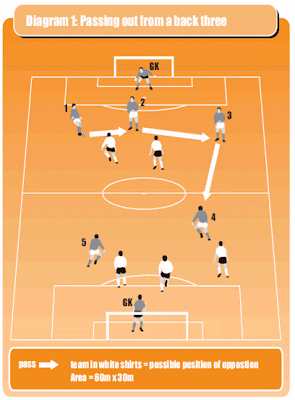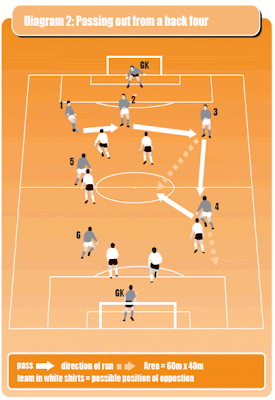We are into our final few games for 2008 and I cannot believe how much has happened in my life over the past few months since I took over as chairman. Time flies!!!
As we start winding down and work to ending off the season on a high there are a few news worthy items that I am sure you are all interested in.
Coaches day held in June
What an incredible day we had, our coaches days was a resounding success. We had 130 kids attend the day with teams from Alberview and Glenview primary. All of this helped us promote our club like never before. A HUGE thank you to Bridgette who was there from early on to help with the coffee and muffins, to the moms who helped in the tuckshop and of course to our coaches who showed what they were made of by being there from 6:30am ready to run as Dudley took them through their paces.
The biggest gain was the incredible knowledge gained by our coaches. This knowledge will help Rovers as we continue to raise the standard of our coaching so we will raise the standard of play.
Fund Raisers
We had a rather good response to our LCD TV raffle we ran. We managed to raise over R12500. Although we initially said we would allocate half the cash raised to the club, as a committee we felt that with current tough times it would be difficult to then ask parents to pay in additional amounts to get a tracksuit for their boys. Therefore we took the decision that any child who sold R250-00 worth of raffle tickets would qualify for a tracksuit from the club. Those who fell short were asked to pay in the difference. Unfortunately this left the club R6000 poorer than planned, but we are after all here first for the players.
We will be looking at holding more of these raffles in the future. As a parent I know how frustrating selling these lists can be but it is the most effective way to raise much needed funds to run the club. Alternatively we will have no choice ask parents for more financial support to help cover costs. So please do everything you can to assist us in making these fund raisers a success.
9th August Game day
We have managed to arrange a game day on the 9th August where ALL our teams will be playing at home. In having this we will be able to open the tuckshop and sell boerewors rolls to raise money. We need volunteers to help so please contact me directly if you can help. Please make every effort to come along and support the ROVERS teams on the day. Teams will be notified of kick-off times before the day.
NB!!! Please use the toilet at home…….we don’t have one……yet!
Tracksuits.
All our boys who sold their R250 tickets and those who elected to pay in have/will receive their tracksuits this week. If there is anyone who would still like one, please confirm with payment by Wednesday the 30th August 2008. The cost is R250-00. We will be placing a small order on Thursday. If you miss this chance you will only get another opportunity next year again.
Donations received.
We have had a few items donated to assist in our building a better club. We have received a donation of the following:
· A signboard and palisade fencing from Emfuleni Golf Estate
· 3 x Light poles from Beach Boys beach soccer. These will be used for our junior field for 2009 season.
· 2 x soccer nets from Beach Boys beach soccer
We do need help to collect some of these items so if there is anyone who has a flatbed that can collect the signboard and palisade from VDB Park please contact me urgently.
Donations needed
· Going forward need help with sign writing on our newly acquired signboard. If there is anyone who has a contact with a sign writer who will help us please contact me.
· We need 6/8, 8m poles to erect for lighting on the top field for the new season. If anyone has poles lying around at work or knows where we can get these donated please let us know.
· For the lighting we will need spots. It is our intention to make the top field our main field. To do this we will need between 12 and 14 spots to ensure that the field is lit properly.
· We will also need 250m worth of cable to wire the field.
· With the poles secured for the baby field we will still need 3 spots and approximately 100m of cable.
Finally we are still trying to raise sponsorship for the club to help build a club house and ablutions. If there is anyone who can assist us in making contact with potential donors please let us know.
Supporters/parents conduct at games.
It is disappointing to hear that some of our parents get so carried away at games that they forget that we are a junior club and the boys who play are not professionals. Parents, I know how excited and passionate we get at games. When a kid makes a mistake, telling him he is stupid, or shouting at them is not what we want to happen. We will protect our players from bullying, even if it is a parent doing it to their own kid. Our teams are in the league to win, we do not apologize or lose focus of this, but if a parent does not know how sportsmanship and general conduct ties into this then they will be asked to go and wait in the car until the game is over. Please don’t embarrass your kid because you don’t know how to behave! Players, referee and coaches are OFF LIMITS! If you have a problem there are channels set up to address your concerns.
That’s all for now. Sorry for the last point but unfortunately issues like this need to be addressed.
Keep up the work and keep encouraging your boys as they have come a long way in their play and development.
Keep Kickin’,
Glenn Du Toit
Rovers Chairman
082-9034222







.JPG)
.JPG)
.JPG)


.JPG)
.JPG)
.JPG)
.JPG)
.JPG)






















